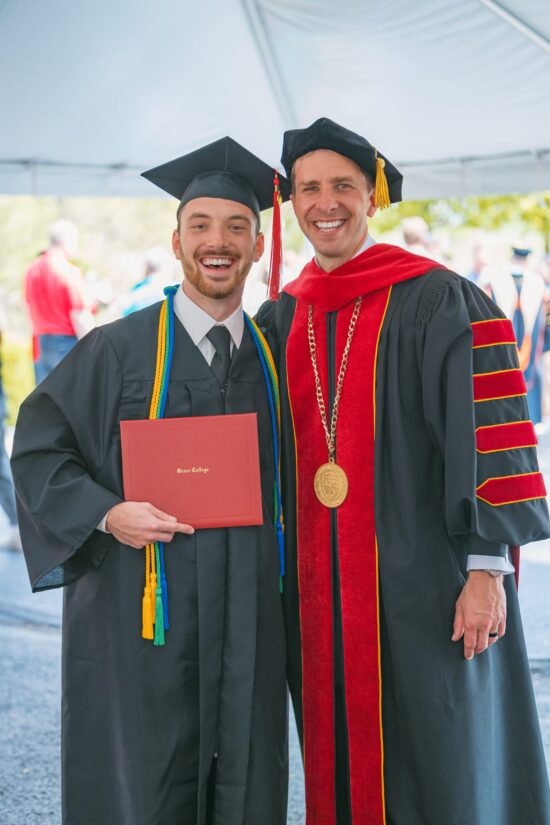A team of Grace College chemistry students and their professor are reaching new heights in chemical research. They recently discovered a new organic compound in their attempt to help eradicate harmful health effects of common toxins.
Dr. Chad Snyder, chair of the Department of Science and Mathematics, director of chemical research and associate professor of chemistry at Grace College, and four of his research assistants, began study of a red tide toxin in 2017. Red tides are a worldwide phenomenon caused by high concentrations of certain aquatic microorganisms. The resulting red-tinted water is found in oceans, bays and other places where saltwater meets freshwater. While it may be pretty, or at least interesting to see, red tides release harmful toxins which can cause fish kills, other wildlife mortalities and human health problems, particularly respiratory distress.
Grace college chemistry students Jacob DeBoest, Micah Gerakinis, Austin Steppey, and Ryan Buzalski, set out on a research journey with Dr. Snyder in hopes that one day their work could lead to deactivating the toxins’ damaging effects. The team synthesized a molecule with a similar structural component to that of a common red tide toxin, HyenanchinBrevetoxin A. Their research uncovered that the molecule is vulnerable to nucleophiles, particularly alcohols. When the nucleophile reaction occurred, the Snyder research team isolated the derivatives which led to a significant scientific advancement: the discovery of a new organic compound.
The new compound was recently confirmed by X-ray crystallography at Western Kentucky University and later verified by the international chemical database Cambridge Crystallographic Data Centre.
The research team continues to test the new molecule’s reactivity with other chemicals in hopes that they will discover more new compounds and ultimately find ways to neutralize the danger red tide toxins present. Soon they will also begin writing a research paper about their findings to submit for publication.
Dr. Snyder was quick to offer superlatives about his students. Referring to the current renovation and construction of the Dr. Dane A. Miller Science Complex, he said, “They did this without the equipment and tools we normally have in our science center. The students did not let challenges deter their work, and now they have achieved something great – the creation of a new compound. I’m very proud of them and excited about what will come next in their research.”
Austin Steppey, one of the chemistry students, said that waiting was the most challenging part of the process. When one of the collaborators testing the molecule had trouble with their own equipment, it lengthened that part of the process. But all the challenges were overcome and the reward is being realized. Jacob DeBoest echoed some of Steppey’s thoughts when he said the most rewarding aspect of the project was working together.
Grace College aspires to academic excellence in each of its five undergraduate schools, seminary and six graduate degree programs. The comprehensive Aspire Campaign for Grace College & Seminary has achieved more than 88% of its $37 million goal since launching in spring, 2017. One major project of the campaign, the Dr. Dane A. Miller Science Complex, is scheduled to open in August.




